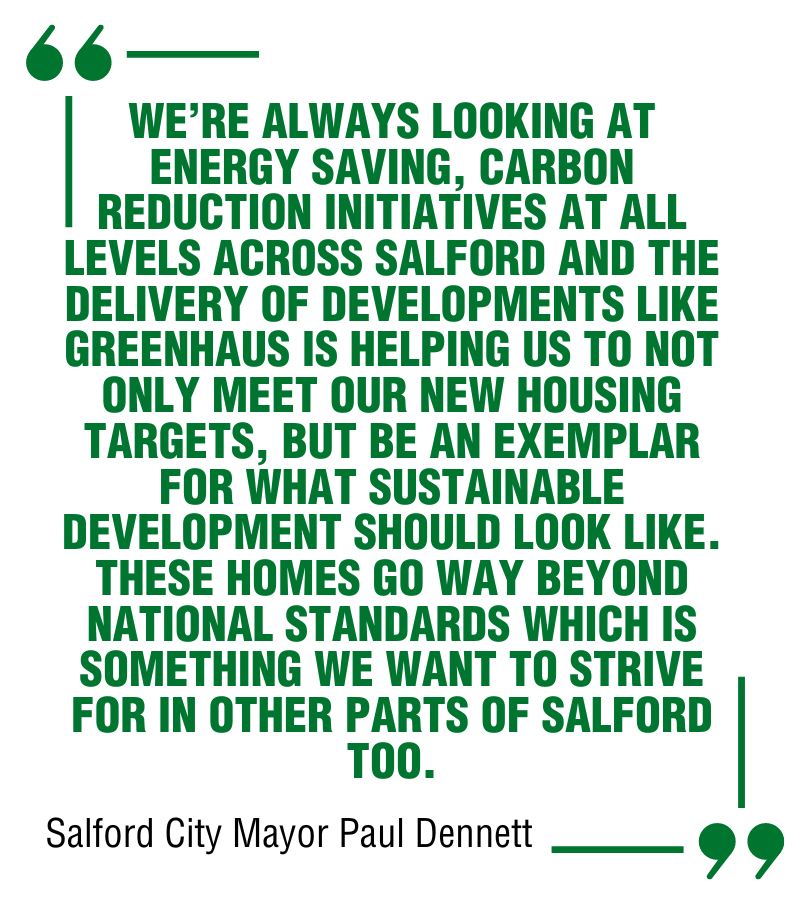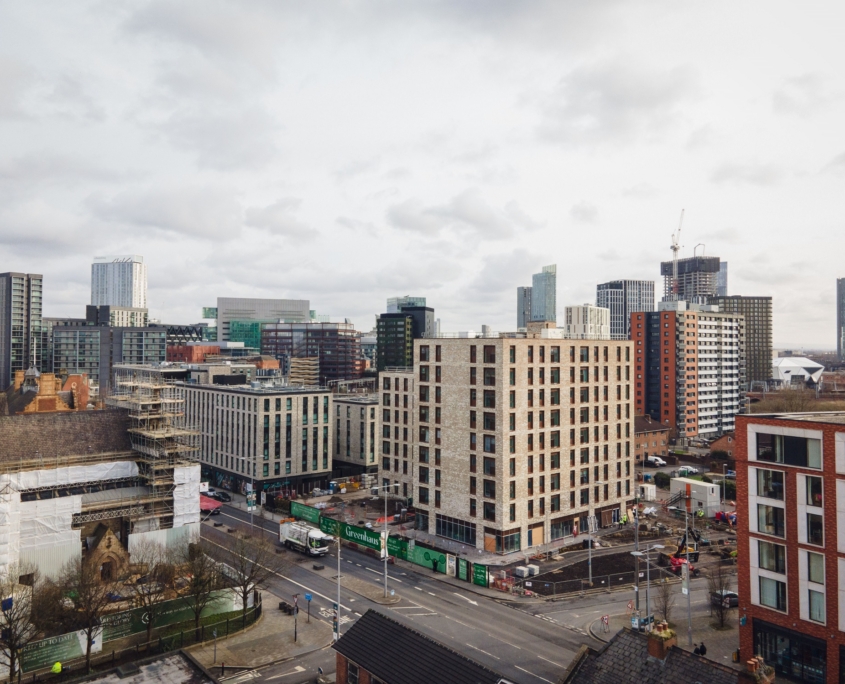FUNDING
Greenhaus is being delivered in partnership with the English Cities Fund (ECF) – a joint venture between nationwide placemaker Muse, Legal & General and Homes England, to bring together the public and private sector to transform urban areas. It’s supported by Salford City Council which has provided the land for the development.
Salix Homes is the housing association partner and is financing the project after securing funding with its banking partner NatWest. Grants have also been secured from Homes England and Greater Manchester Combined Authority (GMCA).
Greenhaus is part of ECF’s £1bn, 50-acre Salford Central transformation being delivered in partnership with Salford City Council, and will take the overall percentage of affordable homes delivered by ECF to 25% across the Chapel Street area of the masterplan.
The homes are being built by lead contractor Eric Wright Construction and were designed by architect Buttress.
ACTION
 Delivering truly sustainable homes that are also affordable is a challenge, and high-spec homes with the energy saving credentials of Greenhaus are uncommon in the social housing sector.
Delivering truly sustainable homes that are also affordable is a challenge, and high-spec homes with the energy saving credentials of Greenhaus are uncommon in the social housing sector.
Greenhaus represents a new era of high quality, sustainable and affordable homes which are better for the environment, support carbon reduction targets, and help reduce fuel poverty for residents.
It’s the first and largest development of its kind in the region, setting the benchmark for new-build, affordable and sustainable homes that are fit-for-the-future.
The one and two-bedroom homes will be available in a mix of tenures including social rent, affordable rent and rent-to-buy, giving more people the opportunity to live in homes in a desirable area, which are sustainable and affordable.
The sustainable features at Greenhaus include triple glazed windows, the latest insulation technology, improved ventilation and airtightness, air source heat pumps and publicly accessible electric vehicle charging points.
While the initial cost of building Passivhaus standard homes might be higher, Salix Homes has considered the long-term savings to be made on repairs and maintenance or complex and expensive retrofit solutions, as well as the financial and health benefits for residents.





